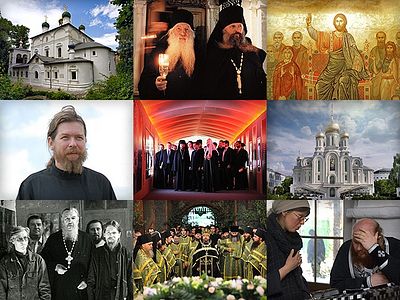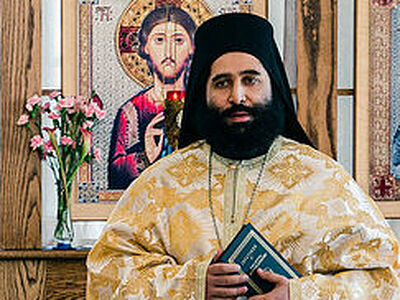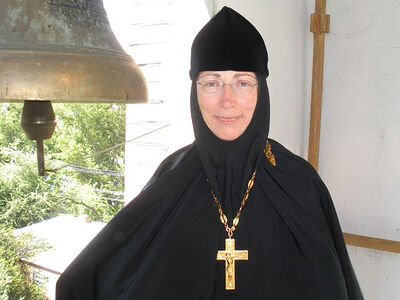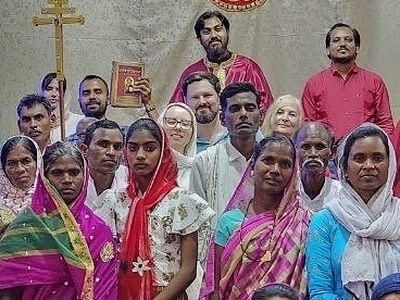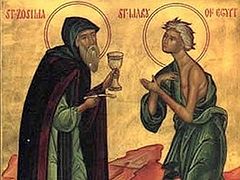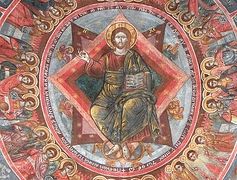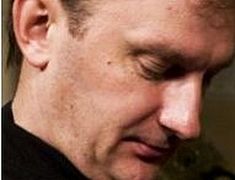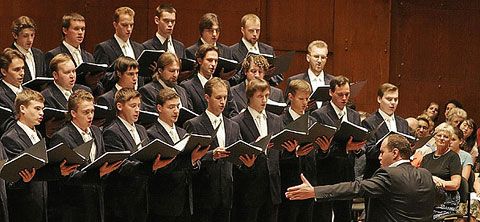 The Moscow Sretensky Monastery Choir performing at Avery Fisher Hall. Photo by Erin Baiano for The New York Times The Moscow Sretensky Monastery Choir performing at Avery Fisher Hall. Photo by Erin Baiano for The New York Times |
| The Moscow Sretensky Monastery Choir performing at Avery Fisher Hall. Photo by Erin Baiano for The New York Times |
September 6, 2007
Despite the best efforts of oppressive regimes, art endures. The Moscow Sretensky Monastery Choir, which made its American debut at Avery Fisher Hall on Tuesday night, offers potent proof. The monastery, founded in 1395 to commemorate a victory over Tartar invaders, was taken over in 1917 by the Bolsheviks, who exiled the monks. In 1994 the monastery was returned to the Russian Orthodox Church, which established the choir to revive long-suppressed sacred music traditions.
The Sretensky Choir, led by its artistic director, Nikon Zhila, is touring to commemorate a more recent milestone: the reunification of the Russian Orthodox Church , which took place on May 17. Among the large, lively audience were many Russian speakers, including a sizable contingent of men in clerical robes.
The 41 singers, however young they appeared, had clearly mastered the dense, nasal tone and luminous blend characteristic of Russian choral tradition. “God Is With Us,” ascribed to a Father Vasiliev, established a bold, assertive tone in lines of surprising rhythmic bounce. “Stichera on the Dormition of Theotokos,” an anonymous chant, demonstrated the severe 17th-century Znamenny style that predated an incursion of Western musical values.
An enchanted hush fell over the hall during “Now the Powers of Heaven,” an achingly lovely hymn that swelled to a brief but powerful climax. Piotr Dinev’s “It Is Truly Meet” returned to the bright, vigorous sounds that opened the program. More of this rare, beautiful music would have been welcome, but the rest of the concert was devoted to another tradition the Sretensky Choir seeks to preserve: Russian, Cossack and Ukrainian songs and romances.
Love — whether for nature, the homeland or a girl — and the price of military duty ran high throughout these 19 selections. Most featured simple, memorable melodies in a cappella arrangements that were sophisticated but not unduly complex. Sounds familiar from operetta and early cinema were seldom far away in the love songs; tales of battle were punctuated with lusty whoops and whistles.
Several of the choir’s members proved memorable soloists. Dmitry Beloselskiy, a robust bass, sang so powerfully in “The Steppe Is All Around” that anticipatory applause greeted his three later appearances. The tenor Anton Sergeev sang “Moscow Nights” with the dreamy ardor of a pop idol right down to the physical affectations, and elicited the appropriate response.
The choir’s encores included an earnest “Go Down, Moses” sung in idiosyncratic English and “Oi, Dub Duba,” a Ukrainian folk song performed at an audience member’s request. A dizzying rendition of “Katyusha,” a popular, yes, Soviet-era song, ended the concert on a high note. But the crowd appeared to be ready to listen all night long, and the choir seemed eager to comply.





